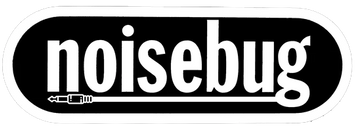Doepfer - A-142-2: Dual Envelope Controlled VCA [CLEARANCE]
$99.00
Description
- AD: Attack-Decay
- AR: Attack-Release
- ADSR: Attack-Decay-Sustain-Release with the limitation that Decay Time = Release Time and fixed Sustain level (factory setting 50%)
Each sub-unit provides these controls and in/outputs:
- LED control (envelope display)
- Attack (A), manual control
- Decay/Release (D/R), manual control
- Mode switch (AD, AR, ADSR)
- Audio level control (small control without knob)
- CVT Input (CVT = CV Time)
- CV Ducking input
- Attenuator for CVT (small control without knob)
- Gate Input
- Manual Gate (momentary switch)
- Audio Input
- Audio Output
- Envelope Output The Envelope Output of version 1 has been cancelled for the benefit of the new CV Duck input. But there is an internal pin header available that has available the envelope signal (0...+10V) and the CV input of the VCA (0...+10V). Ex works the pins are shortened by a jumper but can be used for modifications (envelope output, VCA CV input).
By means of two internal jumpers for each sub-unit one can select which parameter(s) are controlled by the CVT input (e.g. D/R only or A only or A and D/R) and in which direction (i.e. if an increasing CVT shortens or stretches the time parameter in question).
Two more jumpers are used for the optional bus access to the gate signal of the bus for each envelope.
Another jumper enables the Gate normalling of the two units, i.e. Gate socket of unit 1 is normalled to the Gate socket of unit 2. That way only one Gate signal is used to trigger both units.
CV Duck is an additional control input for the VCA that can be used to mute the VCA by means of an external control voltage. Beyond about +5V CV Duck the VCA is fully muted, in the range 0...+5V there is only a partial muting. Circuitry-wise the CV Duck signal is amplified by two, inverted and added to the internal envelope signal (0...+10V). The sum of both signals is used to control the VCA.
The time range of Attack/Decay/Release is about 1ms to 30s (can be modified by changing the value of a capacitor).
Applications:
Virtually in each patch one or more envelope/VCA combos together with a sound source are very useful, mainly for percussive sounds.
Voltage control of the times and the ducking animates each performance.

Eurorack
Eurorack is Doepfer's 3U modular format


![Doepfer - A-142-2: Dual Envelope Controlled VCA [CLEARANCE]](http://www.noisebug.net/cdn/shop/products/a-142-2.jpg?crop=center&height=430&v=1538233179&width=430)